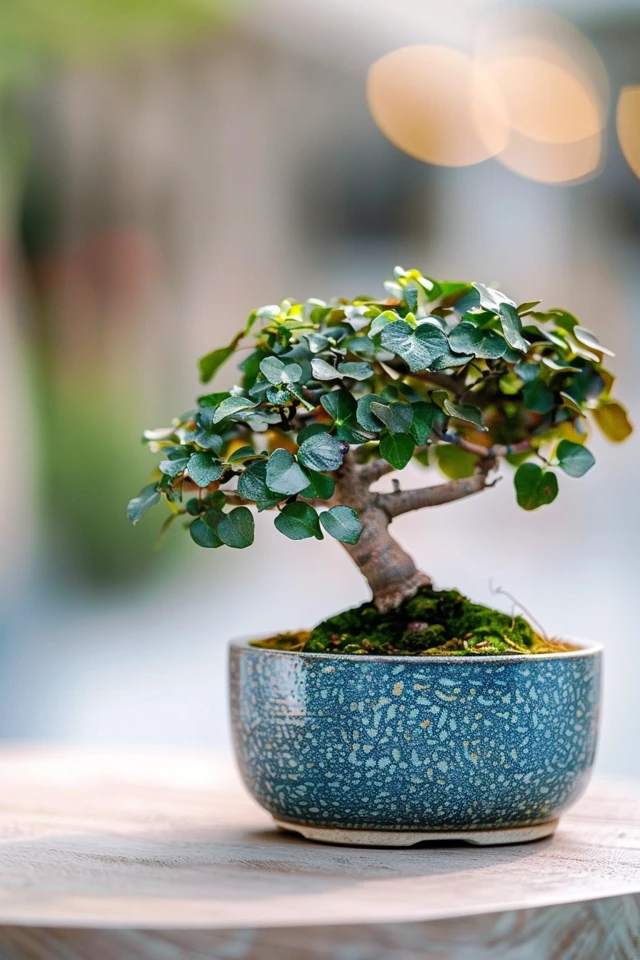Growing bonsai from cuttings is an exciting and accessible journey into the world of bonsai gardening. If you’re a beginner, this comprehensive guide will walk you through the process of propagating bonsai trees from cuttings, allowing you to witness the beauty and artistry of miniature trees unfold before your eyes.
Using cuttings to grow bonsai is a cost-effective method that offers rewarding results. By carefully selecting cuttings from deciduous and some coniferous trees, you can cultivate your own collection of unique bonsai trees. The optimal length for cuttings is between 2-4 inches, ensuring a good balance between ease of handling and successful growth.
Spring and summer are the ideal seasons for taking and planting cuttings. By providing consistent care and patience, you can grow bonsai trees from cuttings and avoid the challenges of dealing with large pruning wounds, which are common with more mature trees.
Key Takeaways:
- Growing bonsai from cuttings is a cost-effective way to propagate new trees.
- Deciduous trees and some conifers are suitable for bonsai propagation.
- Select cuttings that are 2-4 inches in length and 1/8 inch thick.
- Spring and summer are the optimal times for cutting and planting the cuttings.
- Patience is required when growing bonsai from cuttings.

The Process of Growing Bonsai From Cuttings
To grow bonsai from cuttings, follow these steps:
- Trim your bonsai tree and keep the cuttings that are at least 3 leaf nodes long.
- Remove the leaves from the bottom two leaf nodes of the cutting.
- Optional: Dip the cuttings in rooting hormone for better results.
- Stick the cutting straight into the soil, ensuring at least 2 nodes are in the ground.
- Create a plastic barrier to trap in moisture.
- Place the cuttings in a shady area and water them regularly.
- Check for rooted cuttings after about a month.
- Repot the cuttings into separate pots the following spring.
Growing bonsai from cuttings is a great way for bonsai beginners to start their journey in bonsai gardening. By following these steps, you can successfully propagate new trees and nurture them with care. Remember, patience and regular monitoring are key to achieving bonsai success. With proper bonsai care, these plant cuttings will transform into beautiful bonsai trees, bringing joy and tranquility to any indoor or outdoor space.

Best Practices for Developing Bonsai Stock
When it comes to developing bonsai stock, there are several approaches to consider. These include using nursery stock, pre-bonsai stock, and mature bonsai trees. Each approach has its own set of advantages and drawbacks, so it’s important to choose the method that aligns with your bonsai goals and preferences.
Nursery stock is a common option for beginners as it offers a readily available selection of tree species. However, it’s important to keep in mind that nursery stock often lacks the unique character and aesthetic appeal desired in bonsai. While it can be a good starting point, additional work will be required to develop the tree’s trunk and branch structure.
Pre-bonsai stock, on the other hand, requires more time and patience to develop. These are often young trees that have been grown specifically for bonsai purposes. By starting with pre-bonsai stock, you have the opportunity to shape the tree from an early stage, focusing on trunk development and branch ramification.
A contemporary approach to bonsai stock development focuses on three main phases: preparing trees for development, developing the trunk, and refining the branches. During the preparation phase, it’s crucial to select the right tree species and ensure it is healthy and well-maintained. This sets the foundation for future growth and development.
Next, the focus shifts to developing the trunk. This involves techniques such as wiring, pruning, and carving to create the desired shape and structure. The trunk serves as the backbone of a bonsai tree, and its development is essential for achieving a natural and aesthetically pleasing appearance.
Finally, the refinement of branches comes into play. This phase involves careful pruning, wiring, and training to create branch ramification, which is the intricate branching pattern that characterizes mature bonsai trees. Branch ramification adds depth and complexity to the overall design, enhancing the visual appeal of the bonsai.
By following these best practices and dedicating time and effort to bonsai stock development, you can create beautiful and unique bonsai trees that capture the artistry and elegance of this ancient horticultural tradition.

Conclusion
Growing bonsai from cuttings is an excellent way for beginners to embark on their bonsai gardening journey. By following the step-by-step instructions provided in this comprehensive beginner’s guide, anyone can successfully propagate and nurture new trees, while also honing their patience and cultivating a deeper appreciation for these miniature masterpieces.
Whether you choose to start with nursery stock or opt for pre-bonsai stock, the key to achieving stunning results lies in focusing on the three important phases of development: preparing trees for growth, nurturing trunk development, and refining branch ramification.
With dedication and consistent effort, you can unlock the art of bonsai gardening and bring to life beautiful and unique bonsai trees. Through bonsai propagation, you can witness the transformation of cuttings into living works of art, allowing you to experience the true joy and satisfaction that comes with this ancient and revered horticultural practice.

